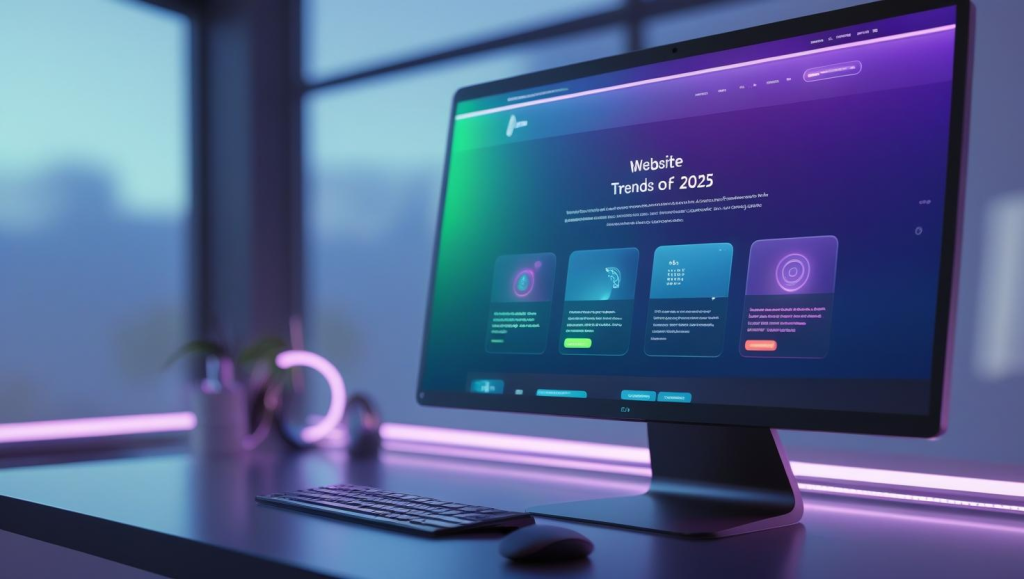Staying ahead in web design means blending eye-catching creativity with seamless functionality. Here are the trends shaping websites today, and how your brand can leverage them to stay cutting-edge.
1. Bold Visuals and Dynamic Layouts
- Big Blocks and Vivid Contrast: Design that commands attention through bold grid layouts featuring strong colour contrasts that guide navigation and user focus.
- Organic Matter and Vivid Glow: Embrace natural shapes, textures, and earthy tones under the Organic Matter aesthetic, complemented by radiant colours that add emotional impact.
2. Expressive Typography and Joyful Elements
- Just My Type and Visual Smiles: Fonts are becoming a statement, with ornate, expressive letterforms that add personality. At the same time, playful and charming design elements create a joyful, memorable user experience.
3. Interactive and Immersive Experiences
- Micro-Interactions and Scroll-Triggered Animations: Small animations such as hover effects, transitions, and fade-ins add polish, guide user actions, and deliver a more engaging experience.
- Cursor Animations and Non-Traditional Scrolling: Custom cursors and creative scrolling styles, such as sideways or sticky navigation, turn browsing into storytelling.
4. 3D and AI-Driven Visuals
- Immersive 3D Elements: Product previews and animated environments bring depth and interaction to websites.
- AI-Generated Imagery and Design: AI tools are producing real-time layouts, illustrations, and visuals that adapt to brand needs instantly.
5. Nostalgia Meets Function
- Retro and Scrapbooking Styles: Pixel art, neon, handmade effects, and collage-inspired layouts add warmth and personality.
- Freeform Finishes and Floating Objects: Whimsical brush strokes, scribbles, and floating UI components create playful interaction.
6. Layout Innovation
- Bento Grid Layouts: Balanced modular blocks that provide clarity and versatility across devices, offering a modern, responsive feel.
7. Personalisation, Inclusivity and Adaptive Design
- Dynamic UI and Personalisation: Customising experiences based on user behaviour increases engagement and loyalty.
- Adaptive and Responsive Design: Fluid layouts ensure optimal experiences across mobile, tablet, and desktop.
- Inclusive and Accessible Features: Design now includes user control over typography, contrast, and motion preferences, ensuring accessibility for everyone.
Why These Trends Matter
- Visual Distinction: Bold layouts and retro styles help brands stand out.
- Interactive Depth: 3D and micro-interactions transform browsing into active engagement.
- Adapt and Personalise: Responsive layouts and personalisation make content more relevant and user-friendly.
- Inclusive by Design: Prioritising accessibility not only benefits users but also widens your audience and strengthens your brand reputation.

